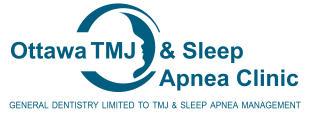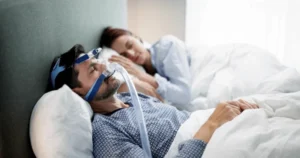Introduction:
Sleep apnea is a prevalent yet often misunderstood sleep disorder that affects millions of people worldwide. In this comprehensive guide, we will delve into what sleep apnea is, the role of CPAP machines, who is susceptible to sleep apnea, the diagnostic process, and the challenges associated with CPAP therapy. However, we will also explore alternatives, focusing on expert advice from Dr. Dahan, a dentist certified in treating sleep apnea with oral appliance therapy.
Additionally, we’ll delve into innovative alternatives, highlighting Dr. Dahan’s expertise in oral appliance therapy. Through expert insights, we aim to provide a well-rounded perspective on managing sleep apnea, allowing individuals to make informed choices for improved sleep and overall well-being.
Understanding Sleep Apnea:
Sleep apnea is a sleep disorder characterized by pauses in breathing or shallow breaths during sleep. These interruptions can last from a few seconds to minutes and may occur 30 times or more per hour. The two primary types of sleep apnea are obstructive sleep apnea (OSA) and central sleep apnea (CSA), with OSA being the more common variant.
Obstructive sleep apnea (OSA)
In obstructive sleep apnea, the most prevalent form, the airway is partially or completely blocked during sleep due to relaxed throat muscles. This blockage hinders the smooth flow of air, leading to the characteristic pauses in breathing. Common signs of OSA include:
- loud snoring,
- gasping
- choking sounds as breathing resumes.
Central sleep apnea (CSA)
Central sleep apnea, on the other hand, is characterized by a lack of effort to breathe rather than a physical obstruction. In CSA, the brain fails to send proper signals to the muscles responsible for breathing. It’s essential to note that some individuals may experience a combination of both types, known as complex sleep apnea syndrome or treatment-emergent central sleep apnea.
Understanding these distinctions is crucial for accurate diagnosis and tailoring effective treatment plans.
What is a CPAP Machine?
Continuous Positive Airway Pressure (CPAP) machines are commonly prescribed devices for treating sleep apnea. The CPAP machine delivers a constant stream of air through a mask to keep the airways open, preventing pauses in breathing. While CPAP therapy can be effective, it’s not suitable for everyone.
CPAP machines comprise a compact unit that houses a motor, air filter, and a humidification chamber. The patient wears a mask connected to the CPAP machine, which delivers a continuous and steady flow of pressurized air.
The primary function of CPAP is to create enough pressure to prevent the collapse or narrowing of the upper airway, ensuring a consistent supply of oxygen during sleep. The prescribed air pressure is determined through a sleep study and is customized based on the individual’s specific needs.
Who Does Sleep Apnea Affect?
Sleep apnea is a sleep disorder that can impact individuals across a broad demographic spectrum. While it can affect people of any age or gender, certain risk factors may contribute to an increased likelihood of developing the condition. Obesity is a significant risk factor, as excess weight can lead to the accumulation of fatty tissues around the neck, potentially obstructing the airway during sleep. Advancing age is also associated with an elevated risk, with older individuals being more susceptible to changes in muscle tone and the overall structure of the airway.
A family history of sleep apnea can indicate a genetic predisposition, suggesting that genetic factors may play a role in its development. Lifestyle choices, such as smoking, can contribute to inflammation and irritation of the airways, exacerbating the risk of breathing interruptions during sleep. Additionally, certain medical conditions, particularly hypertension (high blood pressure), are linked to an increased likelihood of experiencing sleep apnea.
Recognizing the signs of sleep apnea is crucial for early intervention and effective management. Common indicators include loud snoring, choking or gasping sounds during sleep, and persistent daytime sleepiness. By understanding both the general and specific risk factors, individuals and healthcare providers can better identify those at risk and implement appropriate strategies for diagnosis and treatment.
Who Can Diagnose Sleep Apnea?
Sleep apnea is diagnosed by healthcare professionals with expertise in sleep medicine, known as sleep specialists. These specialists can include pulmonologists, otolaryngologists (ear, nose, and throat doctors), neurologists, or other healthcare providers specifically trained in sleep disorders. If an individual suspects they have sleep apnea, the initial step is to consult with a primary care physician, who may then refer them to a sleep specialist for further evaluation.
The definitive diagnosis of sleep apnea often involves a sleep study, which is a comprehensive assessment of an individual’s sleep patterns and respiratory functions. Sleep studies can be conducted in a sleep center or through home-based sleep testing devices, depending on the suspected severity of the condition and individual circumstances. During a sleep study, various physiological parameters are monitored, including brain activity, eye movement, heart rate, airflow, and oxygen levels.
A sleep specialist interprets the data collected during the sleep study to determine the presence and severity of sleep apnea. Following a diagnosis, the sleep specialist works with the individual to develop an appropriate treatment plan, which may include lifestyle changes, positional therapy, continuous positive airway pressure (CPAP) therapy, or other interventions tailored to the specific needs of the patient. Seeking consultation with a qualified sleep specialist is essential for accurate diagnosis and the development of an effective management strategy for sleep apnea.
Challenges with CPAP Therapy:
While CPAP is a gold standard treatment, it’s not without challenges. While CPAP therapy effectively reduces symptoms like loud snoring and daytime fatigue, some individuals may find it challenging to adapt to wearing a mask throughout the night. Moreover, factors such as mask discomfort, nasal congestion, or claustrophobia may contribute to reduced adherence to CPAP therapy.
The Limitations of CPAP:
It’s important to acknowledge that CPAP therapy may not be suitable for everyone. Some people struggle with adherence due to mask discomfort, nasal congestion, or difficulties maintaining the required pressure settings. The negative experiences of CPAP users highlight the need for alternative options.
Hope Beyond CPAP: Exploring CPAP Alternatives
Fortunately, there are alternatives for individuals who struggle with sleep apnea and are undergoing CPAP therapy. Before delving into specific options, it’s crucial to explore lifestyle and dietary changes that can contribute to improved sleep health. Simple adjustments, such as maintaining a consistent sleep routine, creating an optimal sleep environment, and incorporating regular physical activity, can positively impact sleep quality. Additionally, focusing on a balanced and nutritious diet, managing weight, and avoiding certain substances close to bedtime are important considerations. In the following sections, we will delve into alternative therapies beyond CPAP, providing a comprehensive overview of options for individuals seeking effective and personalized approaches to manage sleep apnea.
Dietary and Lifestyle Changes:
- Weight Management: Losing excess weight can reduce the severity of sleep apnea symptoms, as obesity is a significant risk factor.
- Positional Therapy: Sleeping in certain positions may help alleviate symptoms. Elevating the head or sleeping on the side can sometimes be beneficial.
- Avoiding Alcohol and Sedatives: These substances can relax the muscles in the throat, worsening sleep apnea symptoms.
Positional Therapy: Another Alternative to CPAP
For those seeking alternatives to CPAP, positional therapy offers a unique approach. Positional therapy involves adjusting one’s sleeping position to reduce the severity of sleep apnea symptoms. In many cases, individuals experience sleep apnea predominantly when sleeping on their backs. By encouraging side sleeping, positional therapy aims to minimize airway obstruction, reducing the frequency of breathing interruptions. Simple adjustments, such as using special pillows or positional devices, can aid in maintaining a preferred sleeping position. While not a standalone solution for everyone, positional therapy can be particularly beneficial for those whose sleep apnea is position-dependent.
Surgery for OSA: Exploring Lasting Solutions
In some instances, surgery may be considered as a more permanent solution for obstructive sleep apnea (OSA). Surgical options aim to address physical obstructions or abnormalities contributing to airway blockages. Common surgical procedures include uvulopalatopharyngoplasty (UPPP), genioglossus advancement (GA), and maxillomandibular advancement (MMA). While surgery is typically reserved for cases where other treatments have failed or are not suitable, it can offer lasting results by addressing the anatomical factors contributing to sleep apnea. However, surgery is not without risks and should be carefully considered after thorough consultation with healthcare professionals.
In navigating the landscape of sleep apnea alternatives, it’s essential to explore various options and consult with
healthcare providers to determine the most suitable approach based on individual needs and preferences.
Oral Appliance Therapy: A Comfortable Alternative
One promising alternative to CPAP therapy is oral appliance therapy, which involves using a custom-fitted device that repositions the jaw and tongue to keep the airway open. Dr. Dahan, a board-certified dentist with the American Board of Dental Sleep Medicine, emphasizes the comfort and ease of use associated with oral dental appliances.
Why Oral Appliance Therapy?
- Comfort: Unlike CPAP masks, oral dental appliances are compact, comfortable, and easy to wear, making them a preferred option for individuals with CPAP intolerance.
- Ease of Use: Oral dental appliances are simple to use and do not require intricate setup or adjustments, offering a user-friendly experience for sleep apnea sufferers.
- Effective Treatment: Many patients find oral appliance therapy to be an effective solution, addressing sleep apnea symptoms without the challenges associated with CPAP.
Expert Advice from Dr. Dahan:
Dr. Dahan, as a certified expert in dental sleep medicine, emphasizes the importance of seeking alternative treatments if CPAP is not a suitable option. He notes, “I am trained in treating sleep apnea with oral appliance therapy, and I have witnessed its positive impact on the lives of many patients.”
Explore Oral Appliance Therapy:
If you have struggled with CPAP therapy or are exploring alternative treatments for sleep apnea, Dr. Dahan invites you to contact our clinic for a consultation. Discover if oral appliance therapy is the right solution for you and take a step towards better sleep and improved overall health.
Conclusion:
Sleep apnea is a serious condition that requires effective management to enhance both quality of sleep and overall well-being. While CPAP therapy remains a widely prescribed treatment, it’s crucial to recognize that it may not be suitable for everyone. In such cases, exploring alternatives like oral appliance therapy, endorsed by Dr. Dahan, can provide hope and a pathway to better sleep health. Don’t let sleep apnea hinder your life – take the initiative to explore the treatment options that work best for you.

